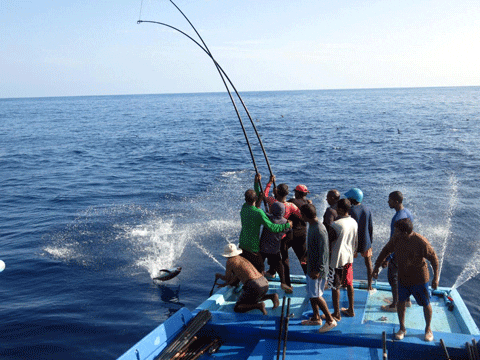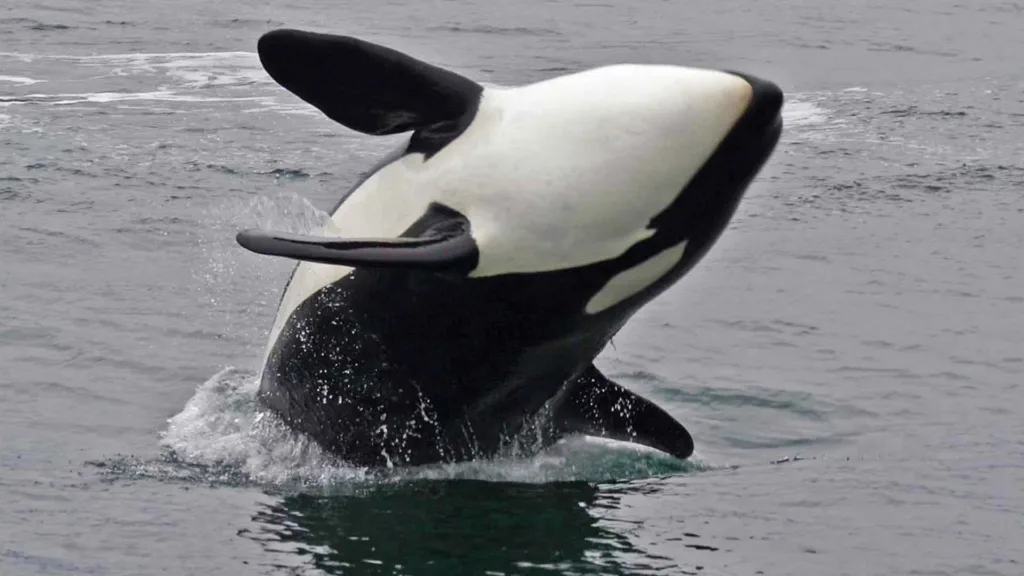
Maldivians depend on fisheries for livelihood. Fisheries play a vital role in the local culture. And it is the lifeblood of the archipelagic nation. When it comes to landing tuna – one can witness one of the most artistic fishing methods in the world. Fishermen take one fish at a time, or they specifically target the desired species. This kind of technique is called pole-and-line fishing. This unique method involves a pole and a line with one hook – it is manoeuvred by one individual.
The main material used is bamboo and plastic nowadays. The pole is around 10 to 15 feet in length. The hooks are barbless and feathered. Sometimes forage fish – anchovies or herring – are spiked on the hook and used as bait for the fish. It results in minimal damage to marine creatures. This method has been practised for centuries. French navigator François Pyrad de Laval described this procedure as follows: “The boats would have been smaller than today, and the sails would have been made from palm leaves, but otherwise it is still done in the same way, using pole-and-line and live bait.”
Maldivians have been practicing pole-and-line fishing for centuries. Hooking one fish at a time, this is believed to be the most sustainable method of fishing in the world. Maldivian pole-and-line fishing exclusively targets skipjack tuna. This method also spares juvenile fish, which ultimately contributes to the protection of fish stocks. Sharks, manta rays and dolphins, which are common victims of other forms of fishing, such as trawling, are safe from pole-and-line fishing.
The majority of these fishing vessels employ between 15 and 20 crew members. First, they catch live baitfish for tuna. Just before daybreak, local dhonis (fishing boats) gather the bait and set sail towards the open ocean. They navigate through turquoise waters and unexplored white sand beaches before crossing the deep blue ocean. They search for schools of tuna using binoculars and sighting birds or dolphins. Observing flocks of birds hovering above the water indicates the presence of fish. The fishermen head towards the tuna school. Once they locate the school, bait fish is thrown to attract the schools of skipjack towards the surface, and before long, the surface of the water bursts into a frenzy.
Fishermen also blend a small amount of bait with water to mimic the behaviour of fish under predatory attack. This technique also attracts tuna. It can also be used to generate a small sound while appearing to make a large one. Then the excitement starts. They use live bait fish to keep the tuna swimming near the vessels.
It takes split seconds for them to pull one in on their barbless hooks. As if magically, the fish gets released off the hook by a flick of the pole. The fish immediately gets placed in ice, and the line goes back in the water to hook another. The exhilaration and the pumping adrenaline during the whole frenzy keep the fishermen going, regardless of either rough seas or the ache in their wrists. It’s an endurance game. After hours at sea, as dusk sets in, the dhoanis return to their fishing villages with the day’s catch. The life of a fisherman is tough, but it is embraced by the locals as a tradition that defines us as Maldivians.



